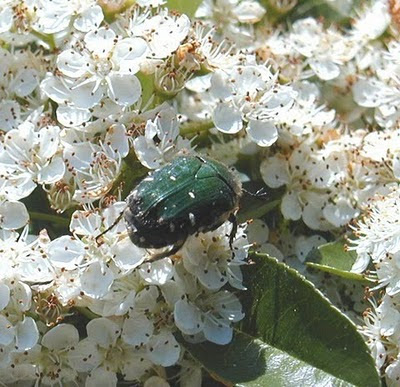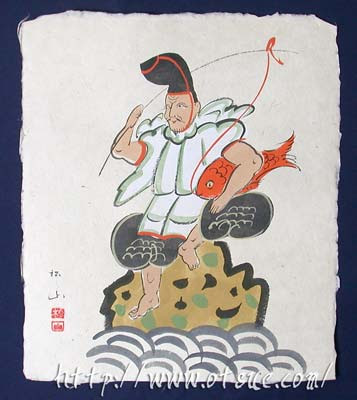::::::::::::::::::::::::::::::::::::::::::::::::::::::::::::::::::::::::::::::::::::::::::::::::::::
Beetles in all seasons
***** Location: Japan
***** Season: Various, see below
***** Category: Animal
*****************************
Explanation
There are many beetles crawling around in Japan,
many take the word MUSHI 虫 as art of their name.
CLICK to view more beetles in my garden !
:::::::::::::::::::::::::::::::::::::::::::::::::::::::::::::::::::::::::::::::::::::::::::::::::::
kigo for all summer

. amenbo アメンボ、水馬 water strider
Gerridae family
..... mizu sumashi 水馬 (みずすまし)
water spider, mizugumo 水蜘蛛
river spider, kawagumo 川蜘蛛
high legs, ashi taka あしたか
sea water strider, umi amembo 海水馬
::::::::::::::::::::::::::::::::::::::::::::::::::::::::::::::::::::::::::::::::::::::::::::::::::::
gengoroo 源五郎 (げんごろう) Gengoro
Japanese water beetle
gengoroo mushi 源五郎虫(げんごろうむし)
..... gengoroo 龍蝨(げんごろう)
Cybister japonicus
. . . CLICK here for Photos !
japanischer Schwimmkäfer
and
tagame 田亀 / 水爬虫(たがめ) "field turtle"
Japanese giant water bug / beetle
Lethocerus deyrollei
dongame どんがめ
kappa mushi 河童虫(かっぱむし)"water goblin beetle"
Kooya hijiri 高野聖(こうやひじり)"mendicant priests from Mr. Koya"
. . . CLICK here for Photos !
"Wanderpriester vom Bergkloster Koyasan"
. Kappa, the Water Goblin
. Koya San in Wakayama 高野山
The famous Mountain Monastery
BTW
. Gengoroh Tagame .
the name of a manga writer.
. . . . .
more water beetles
Most of them live in the wet rice paddies and are like toys and pets for rural children during the summer season.

fuusenmushi 風船虫 (ふうせんむし) "baloon beetle"
..... mizumushi みずむし , water beetle
fam. Corixinae and Sigara
A beloved "toy" for children. They glow in the evening.
Wasserkäfer
matsumomushi, matsumo mushi 松藻虫 (まつもむし)
backswimmers
lit. "hornwort beetles"
Notonecta triguttata
. . . CLICK here for Photos !
::::::::::::::::::::::::::::::::::::::::::::::::::::::::::::::::::::::::::::::::::::::::::::::::::::
. gokiburi ごきぶり, ゴキブリ cockraoch
..... aburamushi 油虫 (あぶらむし) "oily beetle"
..... gokikaburi 御器噛り(ごきかぶり)
.................................................................................
hanymoo 斑猫 (はんみょう) "Japanese tiger beetle"
..... michi oshie 道おしえ(みちおしえ)
..... michi shirube みちしるべ "showing the way"
A rather colorful beetle.
Cicindela inspeanlare
. . . CLICK here for Photos !
.................................................................................

kabutomushi 兜虫 / 甲虫 (かぶとむし) "helmet insect"
rhinoceros beetle, カブトムシ, Kabutomushi beetle
family Coleoptera
kabutomushi 甲虫 "armored insect"
saikachimushi さいかち虫(皀莢虫)"grain-husk insect"
. . . . . but
saikachi no hana 皀莢の花(さいかちのはな) honey-locust blossom
saikachi さいかち) Saikachi beetle
This large beetle is a favorite toy for children in Japan, and sold expensively at animal stores. Many mountain regions specialize on breeding these animals and have regular contests of strenght.
another name is
Genjimushi, Genji mushi 源氏虫(げんじむし) "Genji beetle"
. The Tale of Genji
.................................................................................

koganemushi 金亀虫 / 黄金虫 / 金亀子(こがねむし)
golden scarab beetle
Scarabaeidae family
mame koganemushi 豆金亀虫 "Japanese beetle"
Popillia japonica
kanbun かなぶん、bunbun ぶんぶん
.................................................................................
kokuzoo 穀象 (こくぞう) rice weevil
Sitophilus zeamais
kokuzoomushi 穀象虫(こくぞうむし)
zoobanamushi 象鼻虫(ぞうはなむし)
"beetle with an elephant nose"
kome no mushi 米の虫(こめのむし)"rice beetle"
..... komemushi 米虫(こめむし), yonamushi よなむし
Kornkäfer; Reiskäfer
. . . CLICK here for Photos !
.................................................................................
kometsukimushi 米搗虫 (こめつきむし)
click beetle, snapping beetle
lit. "rice pounding beetle"
nukazukimushi 叩頭虫(ぬかずきむし)
fam. Elateridae
. . . CLICK here for Photos !
.................................................................................
kuwagatamushi 鍬形虫 (くわがたむし) stag beetle
maimai 鼓虫 (まいまい) whirligig beetle
Gyrinidae family
..... mahimahi (まひまひ)
mizu sumashi 水澄し(みずすまし)
. . . should be written in kanji
oomizusumashi 大鼓虫(おおみずすまし)big whirligig beetle
maimaimushi まいまい虫(まいまいむし)
uzumushi 渦虫(うずむし)"whirl beetle"
kaimochikami かいもちかき
. . . CLICK here for Photos !
.................................................................................
otoshibumi 落し文 (おとしぶみ)
larvae of the granary weevil, leaf-cut weevil
"thrown-away letter"
hototogisu no otoshibumi 時鳥の落し文
... of the mountain cockoo
(ほととぎすのおとしぶみ)
uguisu no otoshibumi 鶯の落し文(うぐいすのおとしぶみ)
They are often seen when these birds start singing.
. Read a sample haiku HERE !
.................................................................................
. tentoomushi 天道虫, 瓢虫
Ladybug, Ladybird Beetle
Gourd Beetle, tentoomushi 瓢虫 tentomushi
Glueckskaefer, Marienkaefer
.................................................................................
uribae 瓜蠅 (うりばえ) "curcubit beetle"
urihamushi 瓜葉虫(うりはむし)cucurbit leaf beetle
urimushi 瓜虫(うりむし) "melon insect"
. . . CLICK here for Photos !
:::::::::::::::::::::::::::::::::::::::::::::::::::::::::::::::::::::::::::::::::::::::::::::::::::
kigo for late summer
kamikiri 天牛 (かみきり) long-horned beetle
Betula platyphylla var. japonica
Prionus insularis
かみきり、kuwa kamikiri 桑天牛(くわかみきり)
gomadara kamikiri ごまだら天牛(ごまだらかみきり)
shirasuji kamakiri 白条天牛(しらすじかみきり)
torafu kamakiri 虎斑天牛(とらふかみきり)
ruriboshi kamakiri 瑠璃星天牛(るりぼしかみきり)
kamikirmushi 髪切虫(かみきりむし)"hair-cutting beetle"
. . . CLICK here for Photos !
Bockkäfer; Schmalbock
. . . . . and
kikusuimushi, kikusui mushi 菊吸虫 (きくすいむし)
"chrysanthemum drinking beetle"
kikusui 菊吸(きくすい)
kikusui kamakiri 菊吸天牛(きくすいかみきり)
Phytoecia rufiventris
.................................................................................

tamamushi 玉虫 / 金花虫 (たまむし) jewel beetle
two-striped green buprestid, metallic wood borer
Fam. Julodinae, Polycsetinae
kitchoomushi 吉丁虫(きっちょうむし)
kuro tamamushi 黒玉虫(くろたまむし)black Buprestis
ao tamamushi 青玉虫(あおたまむし)green Eurythyrea
uba tamamushi 姥玉虫(うばたまむし)Chalcophora
Prachtkäfer
Its wings are used to produce colorful laquer items.
The famous Tamamushi Zushi, see below.
.................................................................................
. Seeing off the bugs (mushiokuri, mushi okuri 虫送り)
:::::::::::::::::::::::::::::::::::::::::::::::::::::::::::::::::::::::::::::::::::::::::::::::::::
:::::::::::::::::::::::::::::::::::::::::::::::::::::::::::::::::::::::::::::::::::::::::::::::::::
kigo for all autumn
. fart bug, hekiri mushi 屁ひり虫 , kamemushi
Stinkbock, farting beetle
.................................................................................
kigo for late autumn
chestnut beetle, kurimushi 栗虫 (くりむし)
kuri no mushi 栗の虫(くりのむし)
Curculio sikkimensis
. . . CLICK here for Photos !
*****************************
Worldwide use
Europe - Europa
Rose chafer (Cetonia aurata)
. Namib desert beetle
*****************************
Things found on the way
The famous Tamamushi Zushi 玉虫厨子 tabernacle

Das berühmteste Tabernakel in Form einer Miniatur-Tempelhalle in Japan ist wohl der reich geschmückte "Goldkäferschrein" bzw. "Prachtkäferschrein" (tamamushizushi) des Tempels Hooryuji, Nara. Es stammt aus der Asuka-Zeit und ist 2,33 m hoch. Die Seiten waren mit durchbrochenen Metallauflagen mit Einlagen von Flügeln des Prachtkäfers (tamamushi) verziert, daher der Name. Das Dach zeigt die Form eines typischen Sattelwalmdaches (irimoyazukuri shikorobuki).
Gabi Greve, Tabernakel (zushi 厨子)
Reproductions

MORE
source : www.nakada-net.jp
玉虫の羽のみどりは推古より
tamamshi no hane no midori wa Suiko yori
the green
of the Jewel Beetle's wings
since the time of Suiko . . .
Tr. Gabi Greve
. Yamaguchi Seison 山口青邨 .
- quote
Empress Suiko (推古天皇, Suiko-tennō) (554 – 15 April 628)
the 33rd monarch of Japan。
Suiko's reign spanned the years from 593 until her death in 628.
© More in the WIKIPEDIA !
かごめ歌は、玉虫厨子の歌だったのか?
with image :
source : kodaitantei
*****************************
HAIKU

ghost stories -
a silhouette and then
a peeking face
Gabi Greve, summer 2007
Look at more photos on this LINK.
:::::::::::::::::::::::::::::::::::::::::::::::::::::::::::::::::::::::::::::::::::::::::::::::::::::

candlenight -
is the beetle looking for
enlightenment ?
Gabi Greve
Haiku and Anthropomorphism
:::::::::::::::::::::::::::::::::::::::::::::::::::::::::::::::::::::::::::::::::::::::::::::::::::::
rain spattered Buddha
a jewel beetle scuttles
into a crevice
Laryalee Fraser
Buddhas and Beetles - Photos and Haiku by Gabi
:::::::::::::::::::::::::::::::::::::::::::::::::::::::::::::::::::::::::::::::::::::::::::::::::::::
dusty bag --
a weevil penetrates
into a maize seed
Victor Odhiambo
Kenya, January 2011
*****************************
Related words
Beetles in winter
TBA
***** . ANIMALS in all SEASONS
SAIJIKI
:::::::::::::::::::::::::::::::::::::::::::::::::::::::::::::::::::::::::::::::::::::::::::::::::::
























